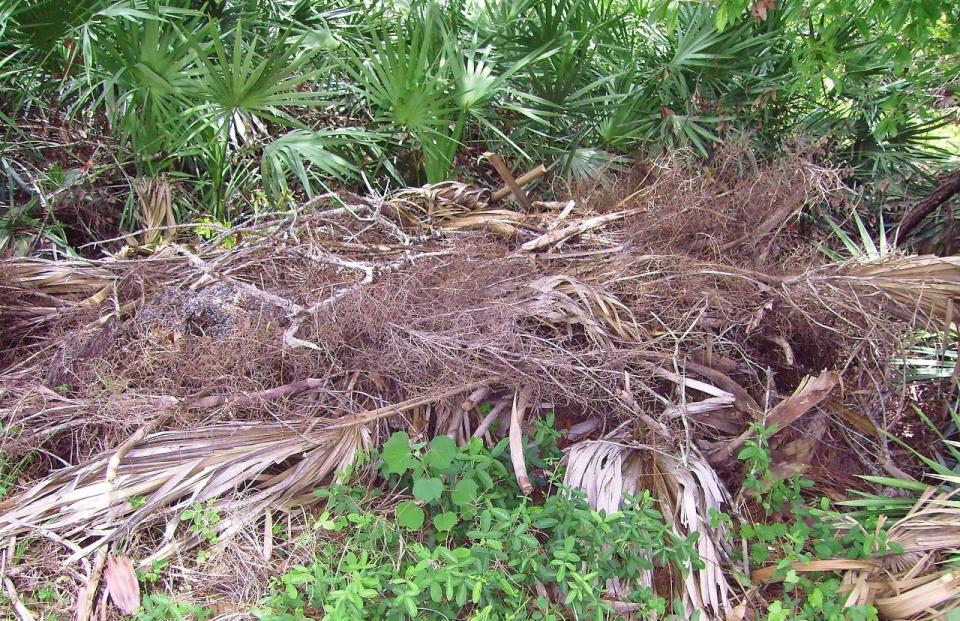Florida gardening: Would coco plums, fire bush and saw palmetto do well, provide wildlife food?
Q: My husband and I purchased a beautiful lot in Jensen Beach. It’s three-fourths of an acre with one-third held as a preserve. We are in the process of preparing to build our home on it, but we want to preserve as much of the beautiful trees that we can.
We also want to have a large raised bed vegetable garden and multiple fruit trees. To that end, we will be clearing around the house and want to plant shrubs under the pines, palmettos and oaks on the parts we want to keep. I was wondering if you thought a combination of coco plums, fire bush and saw palmetto would do well and provide food for wildlife. Any suggestions would be welcomed.
— Janice, via email
A: Congratulations on your new home in paradise. I know you have a whole slew of professionals helping you develop the house and site. May I suggest you work with a landscape architect and maybe a horticulturist specializing in native habitats?
Trees and construction are not easy companions. Heavy equipment rolling over roots damages trees in construction zones, causing soil compaction or wounding the trunks. We know that roots spread out from 1.5 to 3 times the width of the canopy, and most of the roots that absorb water and nutrients are located in the top 10 to 12 inches of the soil.
Changes in grade that affect the preserve plants’ root zone and on parts of the property away from the preserve can cause slow decline and death in trees left on site.
Trenching through or digging holes in the root zone damages roots, and if as little as 30% of the roots are cut, it can cause decline and death of the tree. As little as an inch or two of fill over the roots is enough to kill a tree. It can take years for trees to die after construction.
Plan to protect root zones with fencing and barriers to safeguard the desirable trees and plants on the property. Work with a landscape architect — https://www.aslaflorida.org/ — and an International Society of Arboriculture Certified arborist — https://www.treesaregood.org/findanarborist — to develop and implement a protection plan to successfully shield your trees.

Many assets are available to help produce a wildlife-friendly area around your home. Planting for wildlife should provide shelter, food, and water. Supplying these things in adequate amounts will increase the number and variety of species that visit your sanctuary.
Join the local Native Plant Society Chapter — https://www.fnps.org/ — they offer information on their websites and local chapter meetings. Take a visit to the Treasure Coast Wildlife Center — https://www.tcwild.org/https://www.tcwild.org/ — and read about landscaping for wildlife.
A few of my favorite resources include the Florida Fish and Wildlife Conservation Commission – Planting a Refuge for Wildlife — https://myfwc.com/viewing/habitat/refuge/ — Florida Wildlife Extension – Menu — https://wec.ifas.ufl.edu/extension/ — Gardening with Wildlife — https://gardeningsolutions.ifas.ufl.edu/design/gardening-with-wildlife/ — and Audubon — Plants for Birds — https://fl.audubon.org/news/plants-birds-%E2%80%93-growing-effort.
I do not recommend planting in the area under the canopy of trees and shrubs or piling dirt on the root zone to plant; both of these practices do a lot of damage to the established trees and shrubs.
Instead, use the above references and expert recommendations to develop buffers and zones in your yard to provide wildlife an attractive and successful habitat.
Carol Cloud Bailey is a landscape counselor and horticulturist. Send questions to carol@yard-doc.com or visit www.yard-doc.com for more information.
This article originally appeared on Treasure Coast Newspapers: Florida gardening: coco plums, fire bush and saw palmetto

